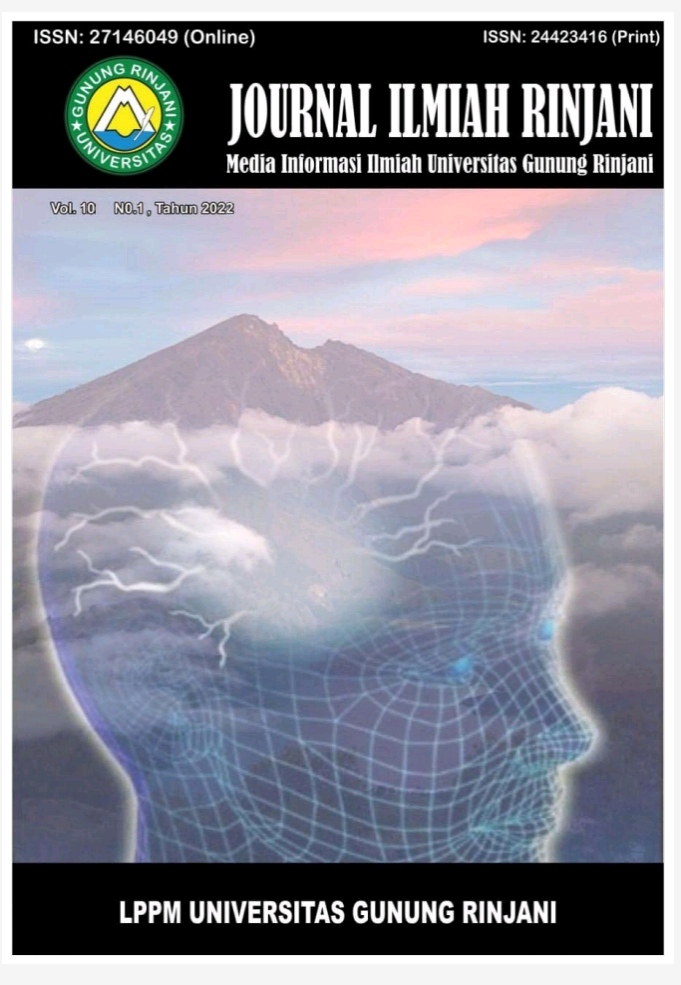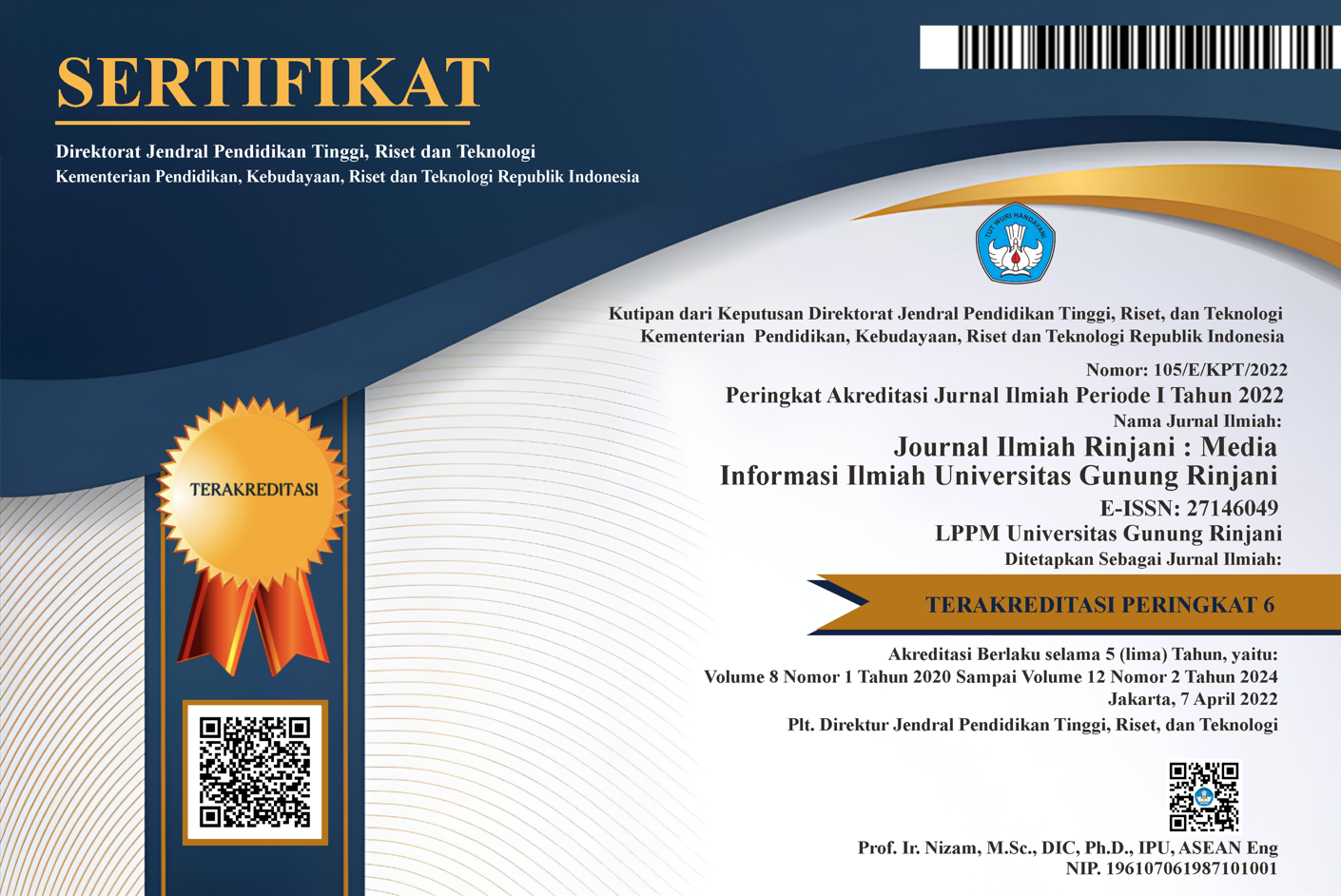Analisis Finansial Usahatani Bunga Marigold (Tagetes Sp) di Desa Sukadana Kecamatan Terara Lombok Timur
Keywords:
Marigold; profit, revenue, financial analysisAbstract
Marigold (Tagetes sp.) is an ornamental plant with high economic value and is widely utilized across various sectors, including decoration, religious ceremonies, cosmetics, and organic agriculture. The market demand for this flower continues to grow, driven by its aesthetic, therapeutic, and ecological benefits. Moreover, marigold has a strong adaptability to various land types and climatic conditions, making it a potential commodity for farmers, particularly in tropical regions such as Indonesia. Sukadana Village, located in the Terara Subdistrict of East Lombok, is recognized as one of the central areas for marigold cultivation. Therefore, it is essential to conduct research to assess the financial feasibility of marigold farming in this area as a basis for informed and sustainable agricultural decision-making. This study aims to analyze the financial feasibility of marigold farming in Sukadana Village. The main research question addressed is to what extent this farming activity is economically profitable for farmers and whether it is viable for continued development. The research employed a descriptive approach with an ex post facto method, and the study location was selected purposively. The sample consisted of 26 farmers, determined through a census method. Data analysis was conducted using the Revenue/Cost (R/C) ratio, which compares total revenue to total production costs. A farming activity is considered financially feasible if the R/C ratio is greater than 1. The results of the study indicate that the total cost incurred by farmers in marigold farming amounts to Rp.65,071,561 per hectare, comprising fixed costs (18.88%) and variable costs (81.12%), with labor being the largest cost component. The total revenue from marigold sales reached Rp.123,638,700 per hectare, resulting in a net profit of Rp.58,567,139 per hectare. The calculated R/C ratio is 1.90, meaning that for every Rp. 1 spent, farmers earn Rp.1.90 in return, yielding a profit of Rp.0.90. Based on these findings, it can be concluded that marigold farming in Sukadana Village is financially feasible and presents a promising opportunity for further development.
Downloads
References
Agustinus, SP, 2010. Budidaya Tanaman Hias. Penebar Swadaya
Abdul Wahid, 2018. Kumpulan Tanaman Hias dan Cara Merawatnya. Pustaka Jaya
Badan Pusat Statistik Indonesia, (2023). Statistik Pertanian Hortikultura SPH Luas Panen dan Produksi Tanaman Sayuran Dirinci Menurut Provinsi Dan Jenis Tanaman, 2018 – 2021 Excels. Biro Pusat Statistik Indonesia : Jakarta.(Online) (Source Url: Https:// Www. Bps.Go.Id/Indicator/55/61/1/ Luaspanen-Produksi-Tanaman-Sayuran.Html Diakses Tanggal 05 September 2023).
Erdiansyah, Iqbal, Dwi Rahmawati Kusuma Ningrum, And Fnu Damanhuri. 2018. “Pemanfaatan Tanaman Bunga Marigold Dan Kacang Hias Terhadap Populasi Arthropoda Pada Tanaman Padi Sawah.” Agriprima : Journal Of Applied Agricultural Sciences 2(2): 117–25.
H.T.B Setiawan, 2015. Tanaman Hias. Panduan Lengkap Budidaya. Andi Offset
Kurniati, Fitri. 2021. “The Potency Of Marigold Flowers (Tagetes Erecta L.) As One Of The Supporting Components Of Agricultural Development.” Jurnal Media Pertanian 6(1): 22–29.
Priyanka Et Al. (2013). "Marigold: A Multiguna Plant."
Ramadhani, Ramadhani, Dian Fauzi, And Syahrial Syahrial. 2021. “Analisis Tingkat Keuntungan Usahatani Tanaman Hias Di Kelurahan Lubuk Minturun Kota Padang.” Jurnal Agrimanex: Agribusiness, Rural Management, And Development Extension 2(1): 24–29.
Sukarman, Sukarman Et Al. 2014. “Penggunaan Tepung Bunga Marigold Dan Tepung Haematococcus Pluvialis Sebagai Sumber Karotenoid Pengganti Astaxantin Untuk Meningkatkan Kualitas Warna Ikan Koi.” Jurnal Riset Akuakultur 9(2): 237.
Sugiyono, 2019. Metode Penelitian Bisnis. Alfabeta. Bandung
Sugiyono. 2015. Metode Penilitian Kombinasi (Mix Mothods). Bandung Alfabeta
Sugiyono. 2010. Statistik Untuk Penelitian. Bandung: Alfabeta.
Soekartawi, 2005. Pengantar Agroindustri. Raja Grafindo Persada, Jakarta.
Suratiyah, K. 2015. Ilmu Usahatani. Penebar Swadaya. Jakarta
Setiawati Et Al. (2001). "Penggunaan Marigold Dalam Pertanian."
Widyatmoko (2019). "Marigold Sebagai Tanaman Refugia."












